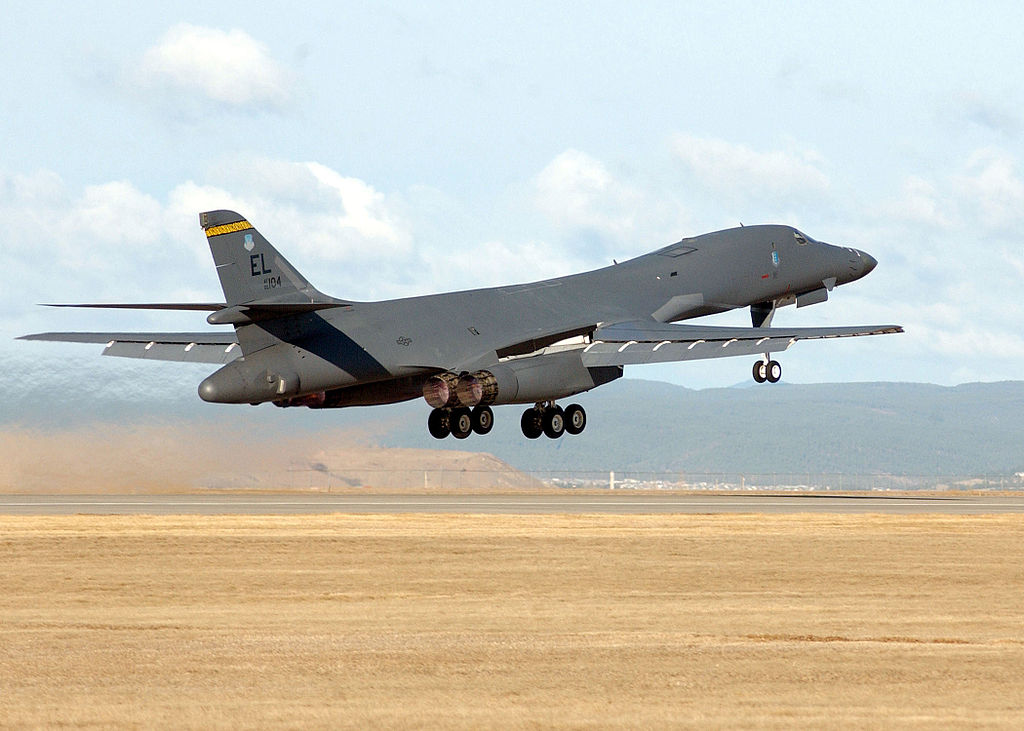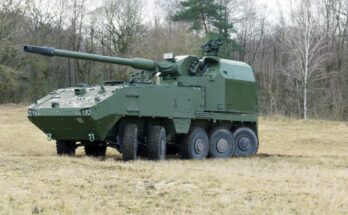
ELLSWORTH AIR FORCE BASE, S.D — A U.S. Air Force B-1B Lancer bomber crashed on January 4th, 2024, while attempting to land at Ellsworth Air Force Base in South Dakota. Fortunately, all four crew members onboard ejected safely.
The aircraft was on a routine training mission in the region when it encountered extreme weather conditions, including poor visibility, low clouds, and freezing temperatures. These factors reportedly contributed to the landing difficulties.
Radio communications from the South Dakota Highway Patrol indicated an active fire and explosion at the crash site. No ground personnel were injured in the incident.
The B-1B Lancer bomber is a supersonic, variable-sweep wing heavy bomber that has been in service with the U.S. Air Force since the 1980s. It is a crucial part of the nation’s nuclear strike capability and can also be used for conventional bombing missions.
In FY21, the USAF retired 17 B-1B aircraft from active service to facilitate the servicing and maintenance of the remainder of inventories over the coming 15-plus-year period, during which time the service’s bomber fleet will steadily transition to operation of the new Boeing B-21 Raider. These divestments reduced the total operational B-1B fleet to 45 production-standard airframes.
The B-1 is now entering the twilight years of its operational history, according to Forecast International’s Airborne Retrofit & Modernization Forecast. Although progress on refurbishment and modernization of the Air Force’s fleet has accelerated in recent years after a long period of stagnation, the Air Force’s intermediate-term objectives for the B-1B remain limited in nature, and the recent downsizing of the active fleet to 17 units is a strong indicator of the service’s current budgetary priorities and long-term force structure objectives. Reducing the B-1B fleet to 45 refurbished airframes will provide the Air Force with a force sufficient to fulfill its immediate-term strategic and operational requirements pending the arrival of the B-21, while simultaneously mitigating investments in unnecessary maintenance and modernization of an increasingly obsolescent asset. Even if the B-1B becomes a testbed or operational carrier for hypersonic weapons, its service in this niche role will remain fundamentally transitional as it is steadily superseded by a new generation of heavy bombers.
A military history enthusiast, Richard began at Forecast International as editor of the World Weapons Weekly newsletter. As the Internet grew in importance as a research tool, he helped design the company's Forecast Intelligence Center and currently coordinates the EMarket Alert newsletters for clients. Richard also manages social media efforts, including two new blogs: Defense & Security Monitor, covering defense systems and international issues, and Flight Plan, which focuses on commercial aviation and space systems. For over 30 years, Richard has authored the Defense & Aerospace Companies, Volume I (North America) and Volume II (International) services. The two books provide detailed data on major aerospace and defense contractors. He also edits the International Contractors service, a database that tracks all the contractors involved in the programs covered in the FI library. More recently he was appointed Manager, Information Services Group (ISG), a new unit that encompasses developing outbound content for both Forecast International and Military Periscope.



